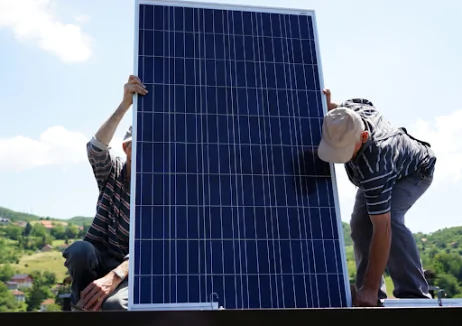When considering the switch to solar energy for your home, one of the primary concerns is often the upfront cost. However, understanding the financial benefits can significantly bolster the attractiveness of this investment. Initially, the price tag may seem substantial, but it’s the long-term financial rewards that make solar installation worth considering.
One major financial advantage is the ability to deduct a significant portion of your solar installation costs from your federal taxes. According to Energy Sage, homeowners can deduct nearly a third of their installation costs, which drastically reduces the initial expenditure. This federal tax credit is designed to make solar power more accessible and affordable, encouraging more homeowners to make the green switch.
Beyond tax deductions, homeowners may also see a reduction in energy costs. By generating your own electricity, you can significantly reduce, and sometimes even eliminate, your monthly utility bills. This creates a ripple effect where the savings compound over time, potentially leading to substantial savings over the lifespan of the solar system.
The Federal Tax Credit for Solar Photovoltaics
The Federal Tax Credit for Solar Photovoltaics plays a significant role in reducing the cost of solar installations. According to Consumer Affairs, this credit allows homeowners to apply up to 30% of the installation costs, making solar energy more affordable between 2022 and 2032. Such incentives are critical in mitigating the apprehension related to the initial investment in solar technology.
The notion that solar energy is unattainable for the average homeowner is gradually changing. With the availability of these substantial tax credits, more families can realistically consider making their homes more energy-efficient and environmentally friendly. This shift opens up broader access to sustainable living for every homeowner.
Moreover, as the demand for solar installations increases, economies of scale are likely to drive further cost reductions. As seen in other tech sectors, increased adoption often leads to technological advancements and cost efficiencies, which can make solar panels and associated equipment even more affordable in the future. Thus, the Federal Tax Credit is just the beginning of potential financial savings.
The Potential for Increased Home Value
Another critical aspect of solar installation is its potential impact on your home’s market value. Studies suggest that homes equipped with solar panels often see an increase in resale value. This is particularly appealing for homeowners looking to invest not just in energy savings but also in property value appreciation.
Solar panels are frequently seen as a significant asset for future home buyers, especially those conscious of energy efficiency and environmental impact. Such buyers are often willing to pay a premium for homes that offer ongoing energy savings, making solar installation an even more profitable investment in the long run. A home that generates its own power can be a strong selling point in a competitive real estate market.
Furthermore, solar-equipped homes may also sell faster than those without. This is crucial in fluctuating markets where time on the market can directly affect selling prices. Thus, solar installations not only enhance the ecological footprint of a home but can also lead to financial gain at the time of sale.
Long-Term Savings and Environmental Benefits
The long-term financial savings associated with solar installations are complemented by environmental benefits. By choosing to invest in solar energy, homeowners are contributing to the reduction of carbon footprints. This not only helps in combatting climate change but also leads to cleaner air and a healthier environment.
As utility prices continue to rise, solar energy remains a stable and predictable source of power. The average tax refund in 2024, as reported by Fox News, is $1,395, which is an option to be used towards covering some part of the installation costs if needed. Over the years, these savings can accumulate, becoming substantially beneficial to homeowners.
Furthermore, solar energy’s renewable nature means that it will remain relatively unaffected by the volatility seen in traditional energy markets. This reliability is a significant advantage for homeowners looking for sustainable solutions for their energy needs. In essence, the environmental and long-term financial benefits can make the decision to switch to solar power even more compelling.
Given the financial incentives, potential increase in home value, and positive environmental impacts, solar installations can indeed be worth the investment. By understanding and utilizing federal tax credits, homeowners can alleviate financial burdens, making the initial installation more feasible. This, combined with the long-term savings on energy costs, positions solar energy as an attractive proposition.
While the initial investment may appear daunting, the potential for significant savings over time cannot be overlooked. As technology advances, installation costs are expected to decline, making it a viable opportunity for more homeowners across the nation. In the context of rising energy costs, becoming self-sufficient can be a wise, forward-thinking decision.
Ultimately, investing in solar energy is not just about monetary savings; it’s about contributing to a sustainable future. For those considering the switch, the long-term benefits certainly seem to outweigh the initial costs. Thus, for both economic and environmental reasons, solar installation is a worthy investment in the journey towards sustainable living.

